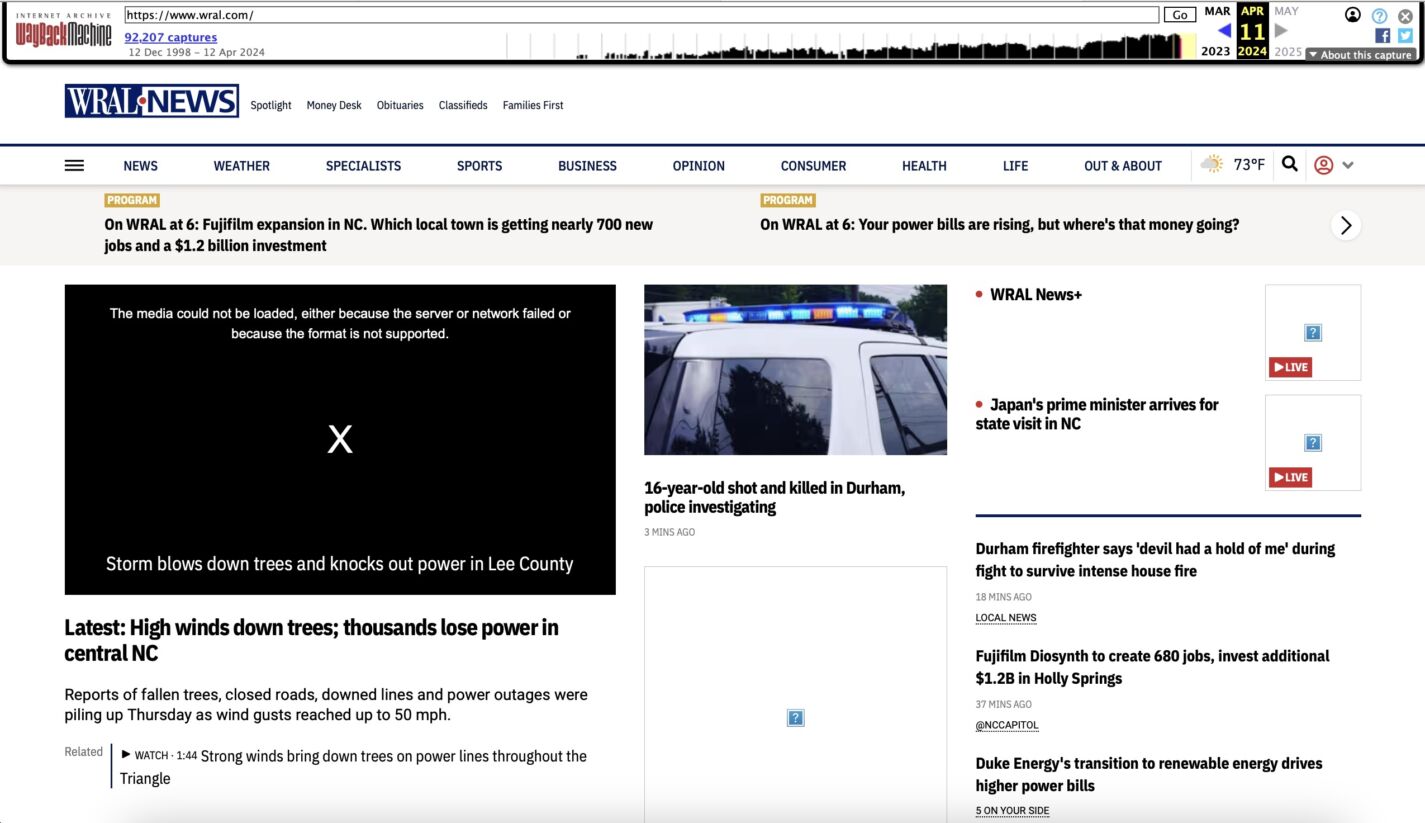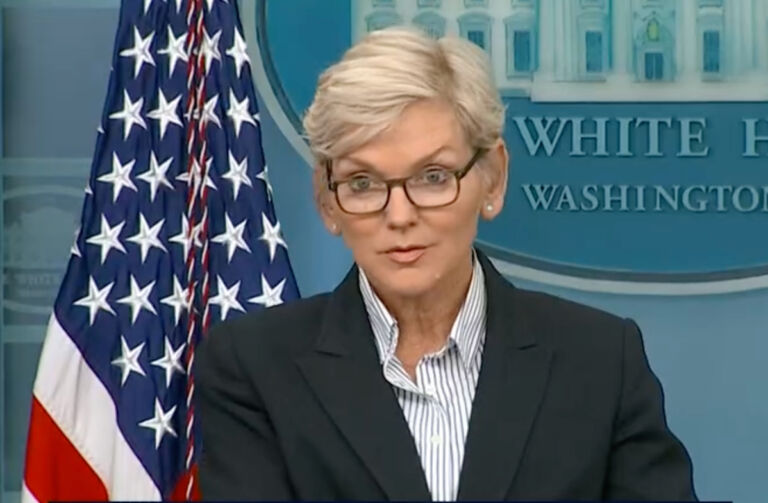Raleigh news station WRAL has a consumer reports feature aimed at helping North Carolinians save money and be better consumers. It’s called “5 On Your Side.” On April 11, WRAL’s “5 On Your Side” featured a story with a very worrisome headline: “Duke Energy’s transition to renewable energy drives higher power bills.”
See the bottom right story (this is the Internet Archive of yesterday’s page):

Here it is by itself:

Today, April 12, WRAL’s “5 On Your Side” carries the same story with a very different headline: “Duke Energy hoping emerging tech research benefits customers.”

What happened to result in such a radical change? The original headline fit the most newsworthy content of the story, and it also addressed the “5 On Your Side” audience’s concerns. It’s something people would be interested in reading. The new headline is less relevant and boring — and also less likely to attract readers.
It’s very true that the “transition to renewable energy drives higher power bills.” It’s also completely counter to the fiction pushed by the governor and renewable energy activists and lobbies that more solar and wind would save people money on their power bills.
Did someone powerful make a call about the story, and if so, who?
Gov. Cooper has actually promised lower electricity bills from closing working power plants and adding new solar, wind, and batteries.
What You Heard Briefly on WRAL, You Heard Here First
Briefly, the headline backed up the research we have produced here at the John Locke Foundation’s Center for Food, Power, and Life.
When the North Carolina General Assembly passed and Gov. Roy Cooper signed House Bill 951 to close all of North Carolina’s coal power plants and move to “carbon-neutral” electricity generation by 2050, we warned that “A New Law Means Higher Electricity Costs Are Coming.” The saving grace in the law is that is requires the “least-cost path” to achieving that goal and to at least maintain the reliability of the grid. But retiring and replacing one-fourth of the state’s generating capacity necessarily entails rate hikes.
Cooper called it “reliable and affordable.”
When Duke Energy produced its initial proposals to the North Carolina Utilities Commission (NCUC) for the “Carolinas Carbon Plan,” we showed that they would result in significant rate hikes: residential customers, $1,030–$1,140 per year; commercial customers, $3,600–$4,050 per year and industrial customers, $279,400–$300,300 per year. We also produced a Least-Cost Decarbonization Scenario with much lower (but still substantial) rate impacts.
When the initial Carbon Plan was approved, we highlighted the discussion within the plan that acknowledged that adding more solar and wind generation would raise rates and harm job creation. We also showed that Duke’s new rate hike request was tied to the NCUC’s orders that Duke suddenly procure so much new solar capacity.
We specifically asked, citing the law: “Is this outcome the ‘reasonable,’ ‘least cost path’ to emissions reductions with ‘least cost planning of generation’ that would ‘maintain and improve upon the reliability of the grid’? It’s not even been a month.”
Cooper, meanwhile, continued to tell people that solar, wind, and batteries were an “essential part of a reliable, lower-cost energy mix.” Note that: “lower-cost.” He doubled down on that nonsense by saying that “mov[ing] the electric grid to more reliable, cleaner, renewable energy will help put more money in the pockets of North Carolinians.”
The governor was actually promising lower electricity bills from closing working power plants and overloading on new solar, wind, and batteries — that’s what “put more money in the pockets of North Carolinians” means.
Then we saw testimony before the NCUC by the NCUC’s Public Staff estimating that “current rates will approximately double between now and the end of the company’s next rate case” (which would begin in 2026). We alerted people to the huge increases looming, writing “We may soon pay double for less reliable electricity. Blame bad policy choices.”
Most recently, we have shown how bad policy choices and perverse incentives are combining to ensure big increases in power bills by incentivizing the overbuilding of unreliable resources, solar and wind.
In other words, if Duke somehow doubled the efficiency of solar, it would be only about 80 percent less efficient than nuclear.
Readers of the “5 On Your Side” report will learn that “Your power bill is more expensive, in part, because Duke Energy is changing the way it delivers electricity. Duke Energy is transitioning away from fuel sources like coal, but also looking at how they weave in other energy sources.”
The story describes how Duke is trying to get solar to be more efficient: “‘The efficiencies are getting better as the processes and panel development get better, so were going from 10%-5% [I assume they mean 10%–15%] efficiency to almost 20%,’ Technology Development Director Rodney James told us.”
In other words, if Duke somehow doubled the efficiency of solar, it would be only about 80 percent less efficient than nuclear.
The report also eventually got to the impetus for Duke’s transition and rate hikes:
Improvements to the grid already come at our expense.
When Duke has asked the North Carolina Utilities Commission to raise your electric rates, that’s one of the reasons they cite, and it’s not expected to stop.
“It’s an ongoing process,” said Duke Energy Spokesperson Bill Norton when we asked him about improving the grid. “The grid’s going to keep evolving with technology.”
And keep evolving because it has to.
In 2021, North Carolina House Bill 951 directed Duke to reduce carbon emissions 70% by 2030 and reach net zero by 2050. That means closing down coal plants and finding new sources of energy.
The stealth edit to WRAL’s “5 On Your Side” headline did a disservice to their audience. Whose interest did it serve?


